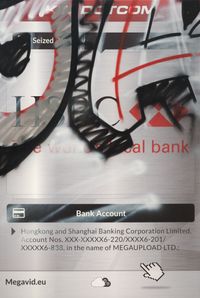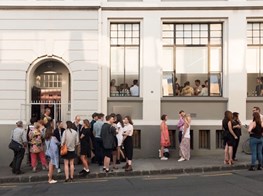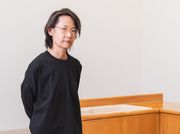Simon Denny: Privacy of Technology
Photo: Calla Henkel and Max Pitegoff
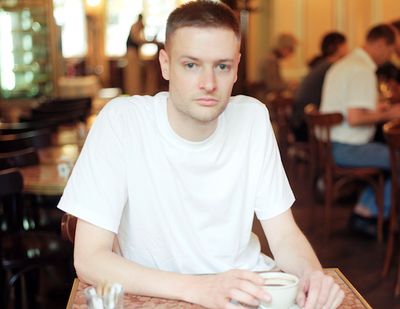
Photo: Calla Henkel and Max Pitegoff
New Zealand-born artist Simon Denny maintains an impressive roster of prestigious international exhibitions. In 2012, he was awarded the Baloise Art Prize at Art Statements, Art Basel 43, and nominated in 2013 for Germany's young artists' award the Preis der Nationalgalerie für junge Kunst. He has twice been nominated for New Zealand's, Walters Prize and will represent New Zealand at the 56th Venice Biennale.
Wellington's Adam Art Gallery hosted Denny's most recent project The Personal Effects of Kim Dotcom, an ambitious museum-scale exhibition that continues the artist's interest in the complex relations of political power that accompany digital and internet technologies. The show alights on the now-notorious story of the eponymous internet entrepreneur and Megaupload founder whose residence in New Zealand has been the source of recent political turmoil and intrigue.
KBCCan you tell us about your current exhibition at the Adam Art Gallery, The Personal Effects of Kim Dotcom? You present a collection of replica objects and pictorial canvasses based on a list of items confiscated by police in the notorious 2012 raid of Dotcom's mansion on the outskirts of Auckland.
The Megaupload founder was arrested for online piracy and much of his property confiscated in a raid that was initiated by the US Federal Bureau of Investigation, but executed by the New Zealand police. When did you become interested in Dotcom as a public figure? Were you following his story prior to the raid?
SDI became interested in the Dotcom narrative when my preferred streaming service went down. I live in a country where all TV is dubbed into German, so to watch 'original version' programming one needs alternative access, and I was happily using Megavideo at the time. A New Zealand Herald news stories also came up on my Facebook feed and I was blown away by reports of the spectacular, bizarre raid—what seemed to be an exceptional event near my home town of Auckland.
All of a sudden issues that I was thinking about a lot—privacy, access to information, ownership, sovereignty, wealth distribution and its proximity to power—galvanised around one incredible, internationally resonant story that was at the same time providing an amazing reflection of media and contemporary culture in New Zealand. As I looked deeper into the details of the raid, I came to the indictment document from the US courts that initiated the process.
At the end of that document was a list of confiscated items, and that list read amazingly. It was a detailed description of a collection of things: on the one hand they were chosen and amassed by an ex-hacker/tech entrepreneur that was close to gaming culture, and on the other they involved a combination of a lot of money, an unbelievable number of bank accounts scattered globally, a fleet of luxury vehicles, a small number of artworks and tech hardware. Then this collection was reframed by the US authorities: so if you think of a kind of Venn diagram—Kim on one side and the US legal system on the other—the subset in the middle was a pretty interesting proposition, and a great suggestion to me as a symbol for all these issues that the narrative attracted.
The idea of filling that list, in a series of touring exhibitions, bringing local 'content' in to fill the place holders of that list anew each time, seemed to me a fantastic proposal for a sculpture. And that's what we have here in Wellington this week—the third iteration of this project, Kim's contraband approximated with material sourced across New Zealand.
I feel excited by this aspect of the material I am working with at the moment.
KBCCan you tell us how these sourced objects and the series of canvasses work together? You collaborated with the designer David Benewith to develop works that make reference to the Dotcom 'list'. The digital print on stretched canvas—a traditional painting support—is an intriguing form to choose. What does it offer you?
SDOne of the things that became central to filling this proposition was scale. Obviously mass is an important idea when you think of the Kim saga. The story has a larger than life presence—particularly right now in New Zealand's media landscape—and what Kim has been accused of facilitating the distribution of (e.g. copies of copies of copyrighted material, in various formats and levels of resolution) is a compelling opposite to the physical mass of the bulk of material confiscated.
Also, attempting to exhibit a collection that is largely cohesive due to its monetary value provides a great counterpoint to trying to represent it without access to even a tiny fraction of that kind of capital. You end up with a distinctly 'low-res' version of the collection. A kind of 'poor' version.
One of the key components to the task has been how to label the collection. In the first two iterations of the show I collaborated with designer David Bennewith on 110 small Dibond printed labels that worked with Flat-UI design derived from Kim's websites. For the Wellington version of the show, I wanted to scale those up—in part to reflect Kim's unbelievable visibility and impact in New Zealand.
So I redesigned all the labels as vectors and blew them up on to large printed canvasses that will populate every corner of the labyrinthine space at the Adam Art Gallery. It's been a great way to emphasize scale, to literally 'bulk up' and utilise a range of the outputting formats that one has access to when drag-and-dropping the digital into a more physical realm.
I think if a viewer encounters these projects and thinks 'what can I trust here?', that is a good outcome.
KBCMany of your projects involve political events that have yet to settle or to come to conclusions that might be easily written into the history books. This means that the works themselves are particularly porous in the sense that they could take on a variety of unintended meanings. I can imagine that the Kim Dot Com project has gained new political significance with the establishment of the Internet Party and all the machinations (and fascinations) that have gone with it.
Is this something you've been thinking about in terms of your Five Eyes project for the New Zealand Pavilion at the Venice Biennale? Are you concerned with how the project could shift over time with new political revelations or movements?
SDI feel excited by this aspect of the material I am working with at the moment—regarding both the Dotcom collection and my Secret Power project for New Zealand's Venice pavilion. Its great to have a durational element inherent in a group of objects that stay fixed in another way—and to incorporate how the reception of events, people and objects is dependent on time and context. Who's telling what story at what moment and through which vehicle is often demonstrative when encountering politically charged material. I think if a viewer encounters these projects and thinks 'what can I trust here?', that is a good outcome.
KBCThe premise of national representation at Venice is interesting. For some of the older European countries this seems like an unnecessary model—many have shown artists that aren't nationals (for instance, Germany exhibited work by Ai Weiwei last year). But for countries like New Zealand that are newer to the Biennale, the question of national representation is still a moot point. It strikes me that this set of relationships is somehow reflected in the Five-Eyes network. ['Five-eyes' refers to an international convention that governs the sharing of intelligence between five former colonial countries: Britain, the US, Australia, Canada and New Zealand.]
Is this something that interests you? Furthermore, are the mechanics of Venice something that you are thinking about? Or is it more a matter of developing a solid and interesting work regardless of the structure of the Biennale or the general clamour of Venice itself?
SDIt is of course important to me that the presentation will be something 'high quality', but yes these mechanics are totally key to how I approached the proposition of making New Zealand's Pavilion. An endorsed commission on behalf of a nation is a rare opportunity, it carries a lot of baggage and as you say, it's a convention that has been questioned by some of the central European presentations in recent Biennale iterations.
As a person who grew up in New Zealand without travelling much outside of it, and now living in another part of the world, the relationship of New Zealand to other nations and how international alliances and links are formed and function is something I often think about. These agreements impact on where I can live and work, and New Zealand's role in intelligence and contributions to global understandings of place and the geo-political map is something that I think is poignant at a high-profile state-associated cultural presentation. Its important material to process and there is a lot of work an artist can do in exploring this territory.
As something related to how New Zealand approaches this event, I also think it's a testament to New Zealand's stance on the arts that the Arts Council operates 'at arms length' from the government, with truly independent selection processes for key appointments and no influence of any kind on content.
KBCI'm intrigued by the physicality of your works whereby there seems to be an insistence on objects, materials and physical visual manifestations. I am speculating here, but you appear to be concerned with how digital systems of knowledge (which are also systems of power) get invested with a certain 'imageness': a particular aesthetic that is both visual and linguistic. This 'imageness' is powerful—Apple has shown that it can make a lot of money!—but totally precarious.
I guess the recently abandoned skeuomorph graphic is an example of this. Are we talking about 'style' here? It seems like a somewhat outmoded art historical term, or one that is simply associated with the fashion or design worlds these days. But are you interested in the style of presentation whereby the 'manner' of communication is just as important as its content?
SDYes, absolutely. That's a great way to put it. UI* design's quotation of older technology in Xerox and Apple's 1970s interfaces guided a potentially reticent public into accepting and naturalising computer systems through the office into the home—this is an aspect of the cultural meeting point of the history of the supposed 'virtual' and the 'real' that I think is amazing. Artist's exhibition designs and practices of artists engaging with collections and commercial display language has also always been a point of reference for me.
I wouldn't say that I have an insistence on objects. I don't think there's an inherent value in working with or without objects, and I don't subscribe to a linear art historical narrative that ends with the exit from the museum and the retreat from objects either. An exhibition is a format, like 16:9 or 4:3, or like an album or a single. Sometimes its interesting to work with objects and exhibitions, sometimes it's more interesting to work outside the gallery context with other ways of generating content.
The 'user interface' design popularised by the emergence of personal computing.
KBCYou've been living away from these shores for awhile now, but it seems that New Zealand still offers a point of reference for some of your projects. Do you think this is informed by your current distance?
SDPossibly. That's a bit hard to say. I think a lot of New Zealanders enjoy travelling and the experience that living in other places gives you. Even if I never live in New Zealand again, my education and formative years were spent there, and my family are there. My perspective on the world still feels like that of a New Zealander to me.
I think New Zealand offers some great case studies on issues that affect the many parts of the globe — and in some cases unique opportunities to access certain discussions — that maybe became more obvious to me from the outside than they were from within. I think the changes in the penetration of options for networked global communication in recent years have also affected the boarders of countries in general, and New Zealand in particular. It feels like a different place to that which I left, when I do have the opportunity to visit.
I think this perspective has really affected how I experienced the political discussion play out around Kim and people from other places who offered commentary around the election. As an immigrant myself, I think discussion that revolves around framing Kim and others as 'not one of us' is very complicated. New Zealand is a place where arrivals of waves of immigrants and conflicts over territory have been central—and are clearly far from resolved. I think those who frame these kinds of discussions in public have a lot of responsibility.
KBCCan you offer some thoughts about living in Berlin? The city seemed to me to be invested in a kind of creative transience: young, quirkily-dressed internationals; cheap rent and food; a quiet cosmopolitanism; a fascinating political history; general fun times. Your thoughts on what it offers artists?
SDI worked on a project in January of this year about the startup ecosystem in Berlin and it made me think a lot about this question. Ultimately, I think Berlin offers artists similar things as it offers founders of young companies—relatively cheap overheads (though that's changing), a place that brands itself as 'creative', that people come to from around the globe to look for other people interested in innovation. But Berlin is also a kind of stratified place—the young, international creative sector has almost no interaction with Berliners that have been there for decades and generations except in very particular points.
Income levels are vastly different between those that come as creative freelancers from Western English speaking countries and people that are born there speaking German or Turkish: it's a very hard place to earn well if you are on a wage or a salary. I was once told that the only people that take taxis, for example, are politicians and foreigners. So, there is always that tension in Berlin also. For me it's a great place to live and work at the moment. — [O]

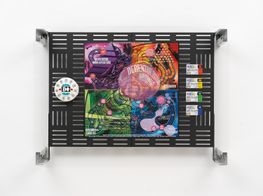
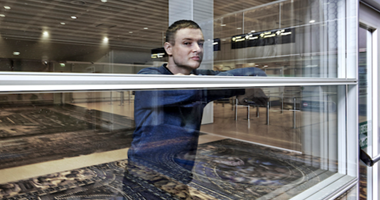
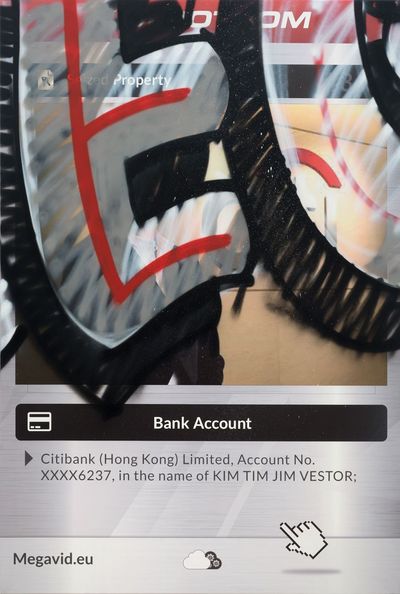


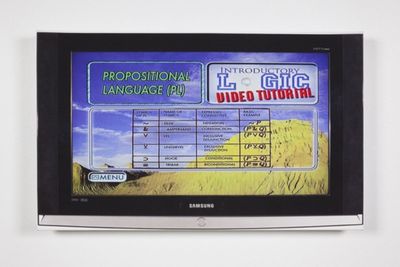
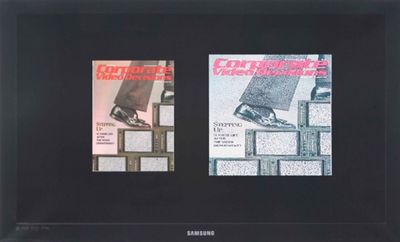
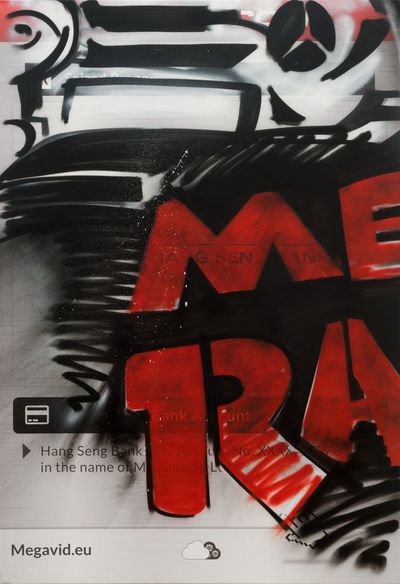
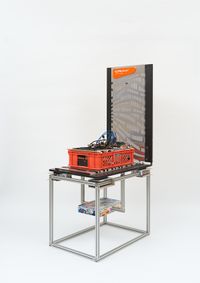
![Modded Server Rack Display: Community Hack [Narrative by Matt Goerzen, suggested product title by Emily Segal] by Simon Denny contemporary artwork sculpture](https://files.ocula.com/anzax/f8/f854278a-e610-476f-93f3-a14133da2d4c_200_300.jpg)
